Scope of Investigation
This is the final report of the Delaware Department of Justice, Division of Civil Rights and Public Trust (“DCRPT”), arising out of the investigation of the use of deadly force by M/Cpl. Ricardo Torres against Sheldon C. Francis (“Francis”). DCRPT reviewed evidence consisting of interviews of civilian and police witnesses, scene photos, video footage, police reports, and ATF Trace reports. Investigators and attorneys with DCRPT reviewed this use of force incident for the Department of Justice, independent of any administrative or criminal investigation conducted by the Delaware State Police.
Purpose of the Department of Justice Report
The Department of Justice determines only whether a law enforcement officer’s use of deadly force constitutes a criminal act. The Department of Justice does not establish or enforce internal police policies concerning the proper use of deadly force by law enforcement officers. Law enforcement agencies are responsible for establishing and enforcing guidelines for the use of force by their officers and for determining whether an officer’s actions were consistent with such guidelines in each case. This report expresses no opinion whether involved officers’ actions complied with departmental policies or procedures.
Facts
On Friday May 8, 2020, in the Delaware Veteran’s Cemetery near Bear, Francis shot and killed an elderly couple visiting the gravesite of their son.[1] Francis then fled into the nearby woods, armed with handguns and a rifle. Following a search of the nearby area, members of the Delaware State Police (DSP) Special Operations Team (SORT) approached the wood line in an armored vehicle. SORT members in the vehicle were met with a large volume of gunfire from Francis. Francis’ gunfire did extensive damage to the armored vehicle, driven by Sgt. Joshua Scaramazza. The major concentration of Francis’ shots was on the driver’s side of the armored vehicle. The damage appears to suggest that Francis was trying to “stack” his shots at the windshield, in an effort to break the bulletproof glass.[2]
Francis fired at least 78 rounds, with many of the bullets directed at police who were on foot outside of the armored vehicle. Assisting NCCPD officers in the area were pinned down by Francis’ gunfire and were unable to move to safety. SORT members M/Cpls. Sean O’Leary, David Chorlton, and Ricardo Torres exited the armored vehicle from the back and returned fire. While police were firing in the direction of Francis, into the woods, Francis was firing in the direction of the police, residential houses, and vehicles. NCCPD and DSP undertook efforts to warn and clear nearby civilians, and no third parties were injured. Francis’ gunfire, however, did cause substantial damage to nearby residences. One of the rounds fired by M/Cpl. Ricardo Torres struck Francis in the head and killed him.
Police discovered Francis deceased inside a makeshift tent he assembled in the woods. Francis was wearing a vest similar to a load-bearing tactical vest. Near his body were numerous shell casings, a semi-automatic handgun, and a semi-automatic rifle. An additional handgun, found during the area search, was determined to be the weapon Francis used to kill the elderly couple. ATF traces of the firearms show all were purchased by Francis. According to family, Francis was “extremely paranoid” about contracting COVID-19 since the outset of the pandemic. Family described him as generally quiet and non-violent, but that the pandemic caused him to develop a “doomsday-like” attitude.
Police Witnesses
Sgt. Joshua Scaramazza, Delaware State Police
Sgt. Scaramazza is a member of the DSP SORT and responded to the area of Brennan Estates in reference to the search for the suspect involved in the shooting which had just occurred at the Delaware Veterans Cemetery. Upon arrival to the scene, Sgt. Scaramazza was assigned to drive the armored vehicle. Inside of the vehicle were Cpls. Chorlton, O’Leary, Torres, and Boyce, and Sgt. Ennis. They proceeded into the neighborhood of Brennan Estates to scout the area to determine where the suspect may be fleeing. As they reached the area of Dunleary Dr., they dropped off Cpl. Boyce so that he could position himself in a residence that permitted a good view of the area. As they approached Celtic St, they were waved down by Cpl. Blackston of NCCPD, who advised them that an NCCPD officer had a visual of the suspect and that he was behind a residence on Celtic St. As they arrived at 10 Celtic St, they made the decision to drive between 10 and 12 Celtic St and approach the wooded area in the armored vehicle. As they reached the wooded area, a tent like structure was observed in the woods. At that point, bullets began impacting the windshield of the armored vehicle. Sgt. Scaramazza put the vehicle in reverse and began backing away from the wooded area, stopping in the grassy area between 10 and 12 Celtic St. SORT members Chorlton, O’Leary, and Torres exited the through the rear doors of the armored vehicle and began exchanging gunfire with Francis. After the shooting ceased, the armored vehicle was repositioned to the driveway of 12 Celtic St.
Sgt. Scaramazza described the rounds striking the windshield as being like driving through a big rainstorm but larger and extremely loud. The rounds were impacting the windshield directly in front of his face. Sgt. Scaramazza did not fire his weapon during the encounter. He remained inside of the vehicle in the event it needed to be repositioned.
Sgt. Christopher Ennis, Delaware State Police
Sgt. Ennis is the commander of the Delaware State Police Explosive Ordinance Disposal Team. Sgt. Ennis responded to the area of the shooting. Once on scene, he was assigned to accompany SORT in the armored vehicle as they conducted intelligence gathering to determine the best utilization of resources to safely search for the homicide suspect. Once they reached a certain point inside of Brennan Estates, they dropped off Cpl. Boyce so that he could enter one of the residences to gain an elevated vantage point of the area. They were then directed to Celtic St by an NCCPD officer who advised them that the suspect had been spotted in the wooded area.
The armored vehicle proceeded between 10 and 12 Celtic St and approached the wooded area behind those residences. Shots like “big wet snowballs” began striking the windshield of the armored vehicle. The vehicle reversed away from the gunfire stopping between the residences. The vehicle was still being struck by gunfire as SORT members exited the rear doors and returned fire at Francis. Cpl. Chorlton, who was seated in the front passenger seat, was moving to exit the rear of the armored vehicle and advised officers that the gunfire was coming from a tent like structure in the woods.
Sgt. Ennis described the incident as scary, adding that it seemed like the gunfire would never end. As the incident progressed, Sgt. Ennis advised they put a ballistic shield against the inside of the windshield because they were concerned about the integrity of the windshield. Sgt. Ennis did not fire his weapon during the incident.
Cpl. Sean Sweeney-Jones, New Castle County PD
Cpl. Sweeney-Jones responded to the area of Brennan Estates because of the shooting which took place at the Delaware Veteran’s Cemetery. Once he arrived on scene, he heard radio transmissions indicating that the suspect was observed running through the wooded area near Rt. 896. NCCPD Cpl. Pluta then transmitted that he was observing the suspect and that Francs was in the area of Celtic St. Cpl. Sweeney-Jones parked his vehicle on Dunleary Dr., and immediately heard gunfire. Cpl. Sweeney-Jones responded on foot to the area of 14 Celtic St, where he took cover behind that residence. He believes the exchange of gunfire lasted approximately three to four minutes. He did not observe the suspect at any point during the exchange of gunfire. Cpl. Sweeney-Jones was evacuated from the area by a tactical team in an armored vehicle.
Cpl. Richard Blackston, New Castle County PD
Cpl. Blackston responded to the area of Brennan Estates because of the shooting at the cemetery. While en route, Cpl. Blackston stated the suspect was described as a Black male, dressed in black, armed with a scoped rifle, who fled into the wooded area in the direction of Brennan Estates.
Cpl. Blackston was paired with NCCPD Cpl. Nicole Jackson and assigned to contact residents in Brennan Estates and advise them to shelter in place or evacuate. While conducting his assignment, Cpl. Pluta came on the radio and advised that the suspect was in the wooded area behind 10 Celtic St. He and Cpl. Jackson responded on foot towards Cpl. Pluta, with Cpl. Blackston positioning himself at the front of the residence to the right of the residence where Cpl. Pluta was located.
The armored vehicle pulled up to the residence where Cpl. Pluta was located. Shortly after this, Cpl. Blackston heard gunshots. He could see SORT team members ducking behind the armored vehicle and the vehicle being struck by gunfire. Cpl. Blackston stated he was able to differentiate the sound of the suspect’s weapon from the weapons of the SORT members. For a period, he could hear the suspect and officers firing at the same time. When asked who began firing first, Cpl. Blackston was certain it was the suspect.
Cpl. Nicole Jackson, New Castle County PD
Cpl. Jackson was paired with Cpl. Blackston and instructed to establish an inner perimeter within the neighborhood. She and Cpl. Blackston were on Dunleary Dr., contacting residents when Cpl. Pluta advised that he observed the suspect in the woods. They flagged down a DSP armored vehicle and advised the officers of the update on the suspect’s location. The armored vehicle proceeded up Celtic St. and between two residences, at which point Cpl. Jackson heard gunfire. She took cover behind a vehicle in the area of 8 Celtic St. and was able to observe DSP SORT members exit the armored and exchange gunfire with the suspect, whom she could not see. Cpl. Jackson observed Cpls. Blackston and Pluta taking cover in the front of residences on the even side of the street.
Cpl Scott Pluta, New Castle County PD
Cpl. Pluta advised that he responded to the area regarding the shooting which took place at the cemetery. He stated the suspect was described as wearing all black clothing and armed with a scoped rifle. He was last seen fleeing into the wooded area.
Cpl. Pluta was in the area of Brittany Ct, when he heard a radio transmission that the suspect was observed by officers positioned along Rt. 896. Cpl. Pluta was aware that Celtic St. was on the opposite side of the woods, so he responded in his vehicle to that location. Cpl. Pluta was on foot near 12 Celtic St. when he heard branches breaking, coming from the wooded area behind the residence. Cpl. Pluta observed the suspect walking back and forth between 12 and 10 Celtic St. Cpl. Pluta thought the suspect’s behavior was odd. Cpl. Pluta communicated his observations over the radio. Cpl. Pluta maintained his position and a DSP armored vehicle drove up to his position. He communicated his observations to the occupants, and the vehicle proceeded between the residences. Cpl. Pluta began hearing gunshots coming from behind the residences. The armored vehicle reversed and was taking gunfire which inflicted heavy damage to the windshield. SORT officers began returning fire in the suspect’s direction. There were multiple volleys of gunfire exchanged between officers and the suspect. Cpl. Pluta also stated that there was a difference in the sound between the weapon of the suspect and the weapons of the officers. He believes the suspect fired first.

Cpl/3 David Chorlton, Delaware State Police
Cpl. Chorlton has twenty-four years of law enforcement experience between his service with Wilmington PD and the Delaware State Police. He is currently assigned full time to SORT as a team leader.
On the date of the incident, he responded to the scene in response to the shooting which took place at the cemetery and the subsequent search for the suspect. Once he reached the area, he was advised that the suspect was observed in the wooded area along Rt. 896. Once Cpl. O’Leary arrived on scene with the armored vehicle, it was determined that they would proceed into the Brennan Estates neighborhood and attempt to gather intelligence regarding where the suspect may attempt to flee. The armored vehicle was occupied by Sgt. Scaramazza (driving), Cpl O’Leary, Cpl. Boyce, Cpl. Torres, and Sgt. Ennis. Once they reached the residence of 39 Dunleary Dr., they decided that Cpl. Boyce would take up a position on the upper floor of the residence so he could provide overwatch for officers who were operating in the area. The armored vehicle then proceeded down Celtic St when an NCCPD officer, who was on Celtic St, advised them that the suspect was possibly behind 12 Celtic St. Sgt. Scaramazza then pulled the armored vehicle into the yard between 10 and 12 Celtic St.
Cpl. Chorlton described the attack on the armored vehicle like stepping on a rattlesnake without seeing it. He said it was furious, scary, and that the rounds were rapidly striking the vehicle. Cpl. Chorlton was certain the fire was coming from a rifle due to the sound the rounds were making as they struck the windshield. Cpl. Chorlton said the fire was continuous and was focused on the driver’s windshield. Sgt. Scaramazza began to back up the armored vehicle and Cpl. Torres opened up the rear doors in anticipation of exiting the vehicle to engage the suspect.
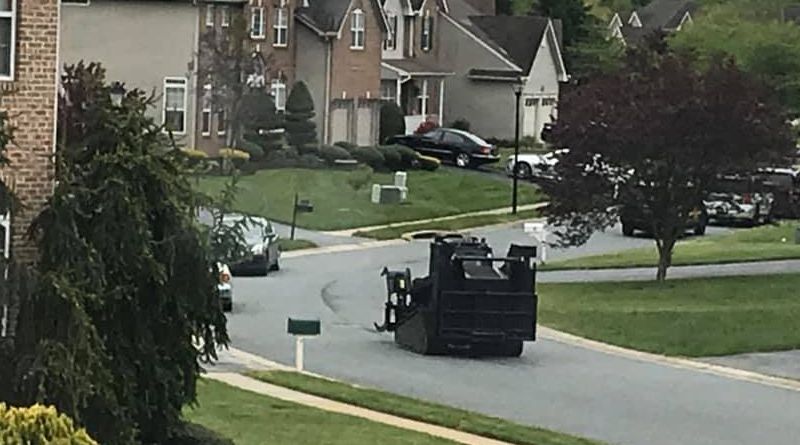
Once the armored vehicle stopped, Cpl. Torres exited and began firing in the suspect’s direction. The suspect continued to fire and, through a window, Cpl. Chorlton was able to observe muzzle flashes from the suspect’s weapon coming from a tent structure located in the woods behind 10 Celtic St. Cpl. Chorlton relayed his observations to team members and Cpl. Torres fired a second volley of rounds at the suspect’s location. Cpl. Chorlton was never able to observe the suspect, only his muzzle flashes, and did not believe he had pinpointed the suspect’s location until he fired three volleys of shots at him.
Cpl. Chorlton exited the rear of the armored vehicle and began firing at the suspect’s location. The suspect was in the woods. After firing his shots, he stepped back behind the cover of the armored vehicle. Cpl. Torres then fired an additional volley of rounds to provide protection for an NCCPD police vehicle that was traveling on Celtic St. in harm’s way of the suspect’s fire. Cpl. Chorlton did not witness Cpl O’Leary firing and was unsure of his position once they exited the rear of the armored vehicle.
Cpl. Chorlton confirmed that all rounds he and Cpl. Torres fired were in the direction of the suspect’s position. Cpl. Chorlton estimated based on the number of rounds remaining in his weapon’s magazine and chamber that he fired 23 rounds.
Cpl/3 Sean O’Leary, Delaware State Police
Cpl. O’Leary has 21 years of law enforcement experience and is currently assigned full time to SORT as an assistant team leader. Cpl O’Leary advised that he responded to the incident after picking up one of the SORT armored vehicles. As he was en route, he learned that the suspect had shot two people in the cemetery and fled into the woods. The suspect was described as wearing all black clothing.
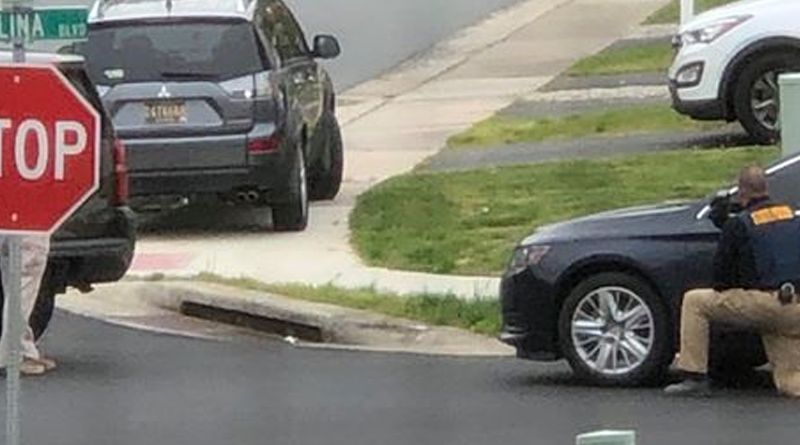
Once on scene, Cpl. O’Leary met up with other SORT members. It was decided that Sgt. Scaramazza would operate the armored vehicle while Cpl. O’Leary put his gear on, in the back. They identified Brennan Estates as a possible route of travel for the suspect and Cpl. O’Leary was concerned that the suspect would escape or cause further casualties. The following DSP officers were in the armored vehicle as they responded into the neighborhood: Sgt. Scaramazza, Cpl. Chorlton, Cpl. Torres, Cpl. Boyce, Sgt. Ennis, and himself. Cpl. O’Leary describes dropping off Cpl. Boyce then being contacted by an NCCPD officer who indicated that the suspect was possibly in the woods.
The armored vehicle was pulled between 10 and 12 Celtic St. towards the rear yard and as they turned towards the woods, rounds “just erupt[ed]” striking the front of the armored vehicle. Cpl. O’Leary stated that he had been inside of the armored vehicle on prior occasions when it had been struck by gunfire and this seemed different to him. He described the sound and percussion as overwhelming. The armored vehicle was reversed away from the woods and, once stopped, Cpls. O’Leary and Torres exited via the rear doors and began firing their rifles in the suspect’s direction, he from the driver’s side and Cpl. Torres from the passenger’s side. Cpl. O’Leary fired one volley of approximately five rounds at the suspect. At one point, an NCCPD police vehicle entered the suspect’s field of fire prompting Cpl. Torres to fire additional rounds in the suspect’s direction to provide protection for the NCCPD officers.
Cpl. O’Leary stated that they had no other choice but to engage the suspect with lethal force. The suspect was directing life-threatening gunfire at the police, and their actions were necessary to prevent the suspect from continuing his assault on law enforcement or civilians.
Primary Officer Interview
Cpl/3 Ricardo Torres, Delaware State Police
Cpl. Torres has 20 years of law enforcement between his employment with DNREC and DSP. He is currently assigned full-time to SORT and is an assistant team leader.
Cpl. Torres and team members proceeded into the neighborhood of Brennen Estates in an effort to gather intelligence and determine the best way to utilize the resources of officers and equipment that was inbound or currently on scene. Cpl. Torres explained that Cpl. Boyce was dropped off at the residence on Dunleary Dr., and that the armored vehicle proceeded on Celtic St. There, police in the armored vehicle were contacted by an NCCPD officer who advised them the suspect was in the wooded area behind 10 and 12 Celtic St. The decision was made to drive the armored vehicle between 10 and 12 Celtic St and approach the wooded area.
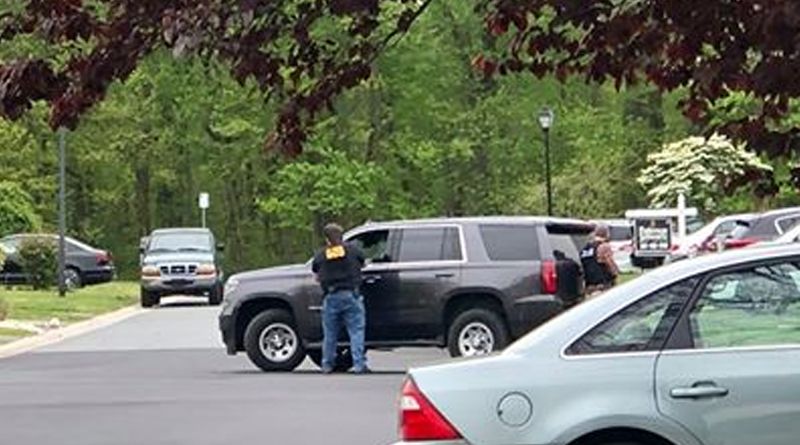
When the vehicle was approximately five yards from the wood line, the armored vehicle began taking heavy gunfire which was directed at the driver’s side of the windshield. Cpl. Torres described the attack as “violent” and “accurate.” Sgt. Scaramazza began to back the vehicle away from the wood line and stopped between 10 and 12 Celtic St. Cpl. Torres was concerned that the suspect was going to change positions while they moved.
Once the armored vehicle stopped, Cpl. Torres exited and proceeded to the rear passenger corner. Cpl. Torres advised that at this point he was scared that he was going to be killed. He had a general idea of where the rounds were coming from and began to fire his rifle in that direction. After firing 8 to 10 rounds, he stepped behind the cover of the armored vehicle to reload. At this point, Cpl. Chorlton advised that the subject was firing from a tent. Cpl. Torres was then able to see the tent at which point he stepped back out from cover and began directing rifle fire at the tent. Cpl. Torres stated that when he was stepping out to fire this second time, the suspect was continuing to fire at them. After firing this second volley of shots, Cpl. Torres stepped back behind the cover of the armored vehicle, Cpl. Chorlton stepped out on the passenger side of the armored vehicle and fired at the suspect as well. Cpl. Torres was aware that Cpl. O’Leary was on the driver’s side of the armored vehicle engaging the suspect as well. Cpl. Torres does not believe the suspect fired any more rounds after the second volley of shots Cpl. Torres fired at him.
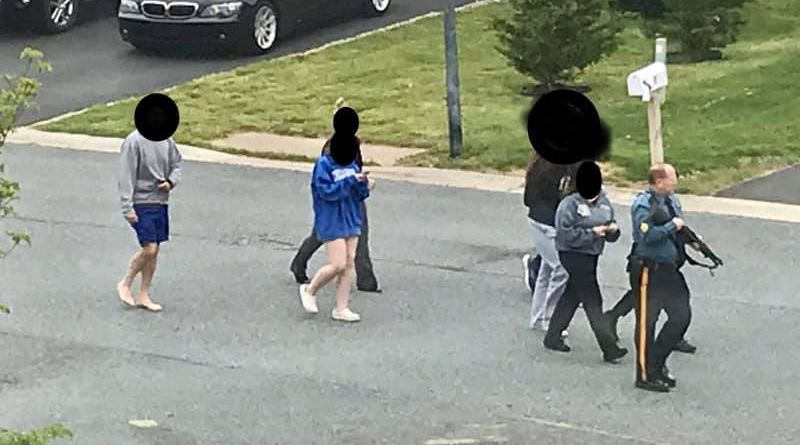
At this point, there was a lull in the exchange of gun fire and officers maintained their positions but were unsure what level of threat the suspect still presented. An NCCPD vehicle was on the Celtic St and traveled into the suspect’s field of fire. Concerned the suspect would begin firing at the NCCPD vehicle in an effort to kill officers, Cpl. Torres stepped out and fired in the direction of the suspect again. This was the last volley of rounds that officers fired. Based on the collection of ballistic evidence attributable to DSP, Cpl. Torres fired 49 times.
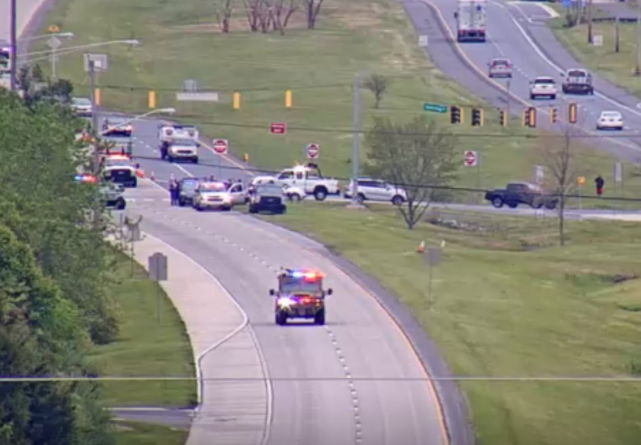
Civilian Witnesses
Witness 1
W1 is a close family member. W1 reported that Francis was extremely paranoid about contracting COVID since the onset of the pandemic. W1 stated that s/he discovered a phone message from Amazon, Francis’ employer, indicating there were a couple of COVID exposures at the warehouse. Otherwise, on the day s/he last saw Francis, he seemed fine.
Witnesses 2 and 3
Present at the time of the interview of W1 were two additional family members. The family was unable to provide a motive for the shooting in the cemetery, or Francis’ later actions. They described Francis as quiet and non-violent, and were unaware that he owned firearms. The family confirmed that since the onset of the COVID pandemic, Francis has been paranoid, having a “doomsday-like” attitude.
Physical Evidence
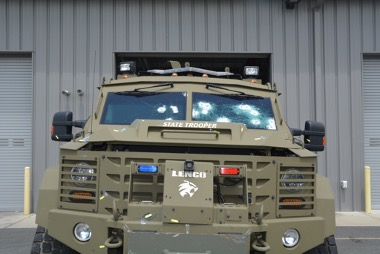
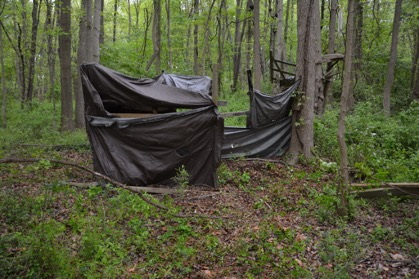
There are three body-worn camera (BWC) recordings recovered from NCCPD. The pertinent footage captured in these recordings is the volume of fire initially directed by Francis in his ambush of the armored vehicle. The first several seconds of gun fire is coming from the suspect. The tempo of the suspect’s gunfire slows, consistent with him attempting to better aim his shots at the driver’s side windshield (which already had sustained significant damage) in an effort to cause failure of the ballistic protection provided by the glass. Cpl. Blackston’s BWC provides the best indication of when the suspect was firing versus when SORT team members returned fire.
In addition to the BWC footage, there was additional video footage recovered from a law enforcement drone and Delaware State Police helicopter that were deployed over the suspect’s location. Helicopter video shows Francis walking through the wooded area. Another video shows muzzle flashes from Francis’ weapon as he initially ambushed the armored vehicle. Drone footage shows the armored vehicle enter the wooded area and then shows its retreat from the wood line. Bullets can be observed striking the front of the vehicle.
ATF Trace Reports
All recovered firearms were traced by the ATF and found to have been purchased by Francis. The ATF trace reports are included in DCRPT’s findings.
Conclusion
The State must determine if the use of deadly force by Cpl. Ricardo Torres was a criminal act. Title 11 Section 464 of the Delaware Code defines the legal use of force in self-protection. It provides, in pertinent part, that “[t]he use of force upon or toward another person is justifiable when the [officer] believes that such force is immediately necessary for the purpose of protecting the [officer] against the use of unlawful force by the other person on the present occasion.”[3] (Emphasis added).
Under Delaware law, the state of mind of the law enforcement officer must be considered when determining whether the use of force was justifiable against another person. The specific factual inquiry is two-pronged. The first question is whether the officer(s) actually believed, at the time they intentionally fired their weapon, that such action was necessary to protect themselves or others from death or serious physical injury. The second question is whether the officer was reckless or negligent in having such belief, or in acquiring or failing to acquire any knowledge or belief, which is material to the justifiability of the use of force. 11 Del. C. § 470(a). If such force is determined to have been justified, the law requires an examination into whether such force negligently or recklessly created injury or risk of injury to innocent third parties pursuant to 11 Del. C. § 470(b).
Police were responding to a double homicide, where the armed suspect, Francis, had fled into the woods. Francis used rifle fire to shoot an estimated 41 rounds directly at the windshield of the armored vehicle, trying to kill its operators. NCCPD officers were pinned down by Francis’ gunfire, and the residential area behind the police was at risk. Cpl. Torres was one of three officers who exited the armored vehicle and returned gunfire. He was in fear for his life. Under the circumstances, this was a reasonable state of mind, and Cpl. Torres’ use of deadly force was justified to protect himself and others.
Furthermore, Cpl. Torres was not reckless or negligent in forming the belief that force was immediately necessary. Francis had killed civilians in a cemetery, took a position in a wooded area, and fired upon police in a concentrated effort to cause their death. The police were not reckless or negligent in forming the belief that return fire was immediately necessary.
Lastly, given that the police were justified to use force towards Francis pursuant to 11 Del. C. § 464, we further determine that they were not negligent or reckless in injuring or creating a risk of injury to third persons under 11 Del. C. § 470(b). No third persons were injured, and the damage to the property of third parties was because of Francis’ gunfire.
Upon careful consideration of the available evidence and the application of expert opinion to that evidence, Cpl. Torres reasonably believed that the use of deadly force upon Francis was immediately necessary for the purpose of protecting himself, other officers in the vicinity, and civilians nearby. For these reasons, the Department of Justice concludes the use of deadly force by Master Corporal Ricard Torres upon Francis does not constitute a criminal offense under the laws of the State of Delaware.
[1] This Investigation did not reveal any known connection between Francis and the victims.[2] See picture of the armored vehicle at the top of Page 10.[3] Justification of use of force for the protection of other persons is also applicable, See 11 Del. C. § 465 “(a) The use of force upon or toward the person of another is justifiable to protect a third person when: (1) The defendant would have been justified under § 464 of this title in using such force to protect the defendant against the injury the defendant believes to be threatened to the person whom the defendant seeks to protect; and (2) Under the circumstances as the defendant believes them to be, the person whom the defendant seeks to protect would have been justified in using such protective force; and (3) The defendant believes that intervention is necessary for the protection of the other person.”
Full Report of the Department of Justice on May 8, 2020 Use of Force by Delaware State Police
Officials: Cemetery Killer Killed By Return Fire After Shooting At Troopers
Troopers Identify Victims In Delaware Veterans Memorial Cemetery Shooting


